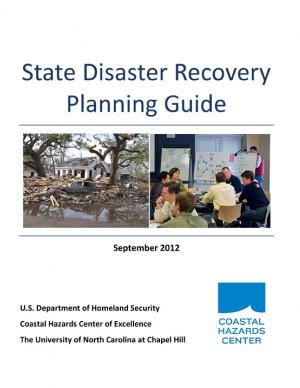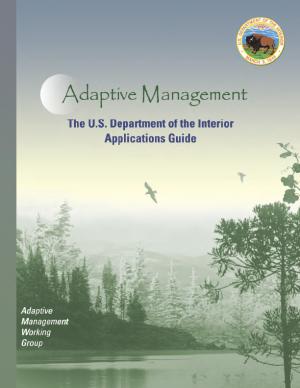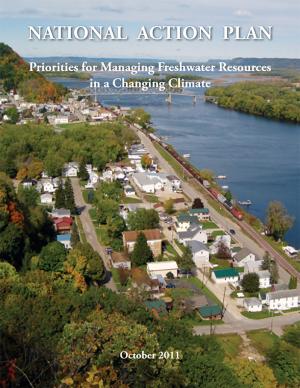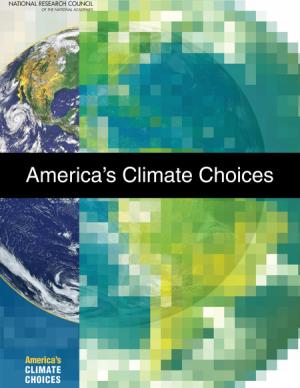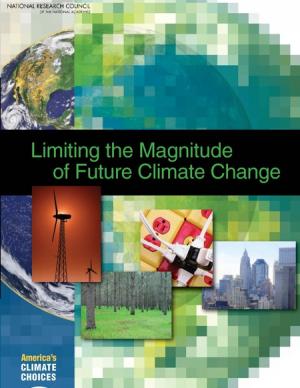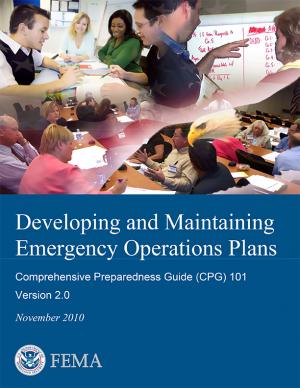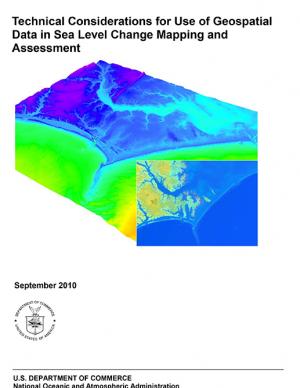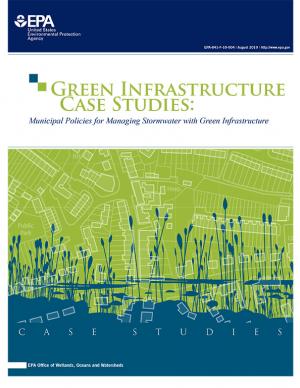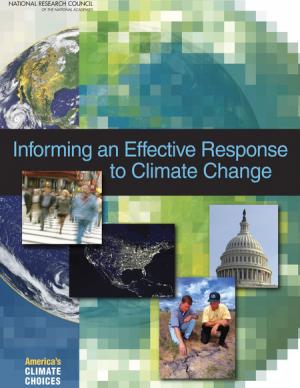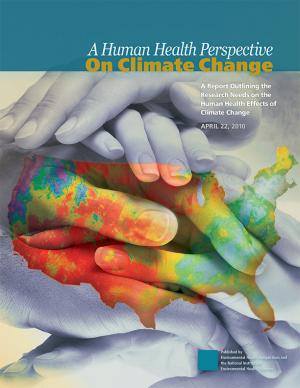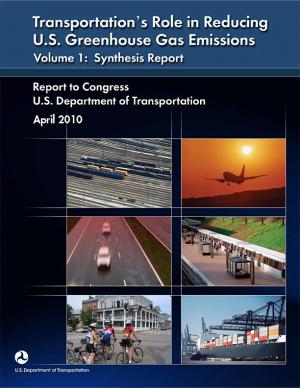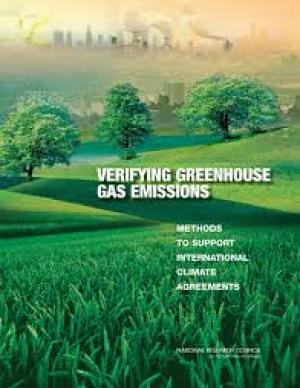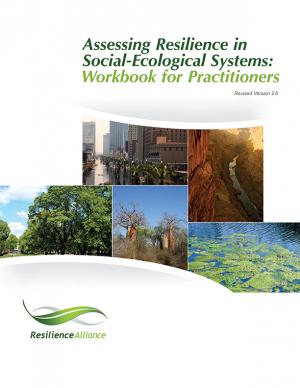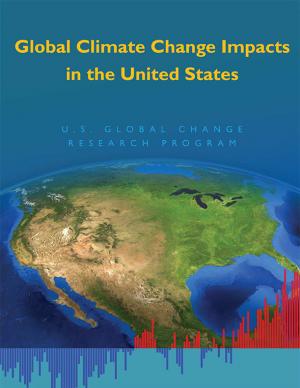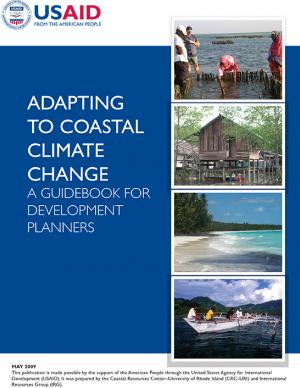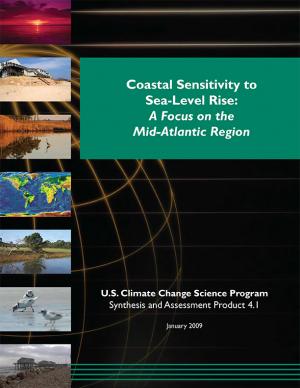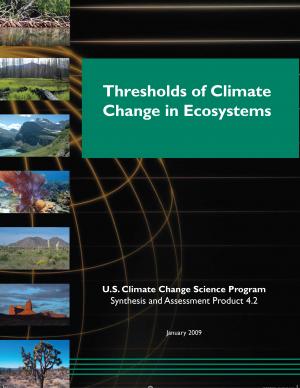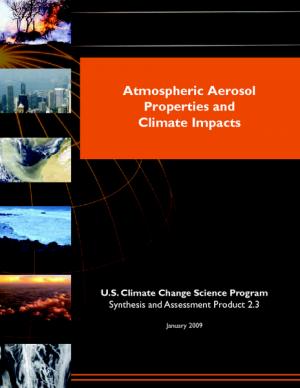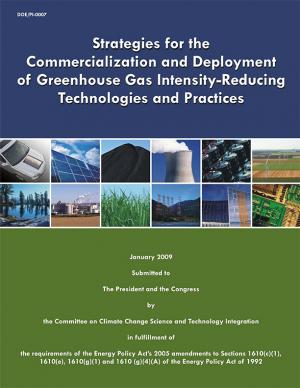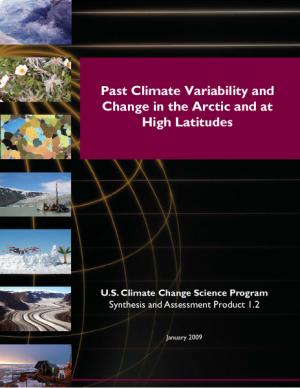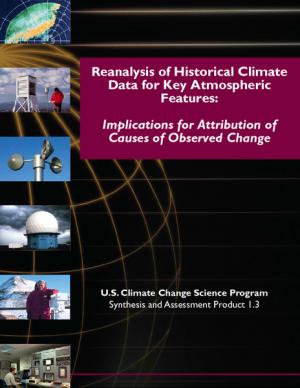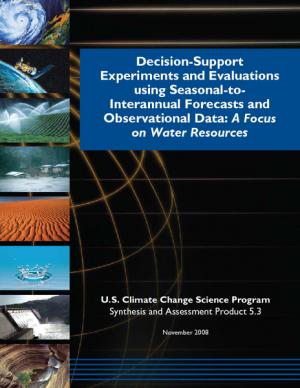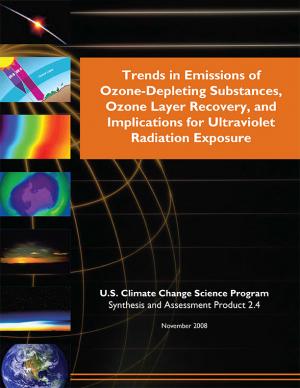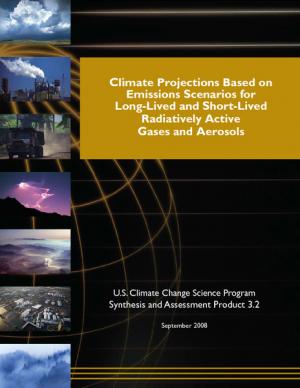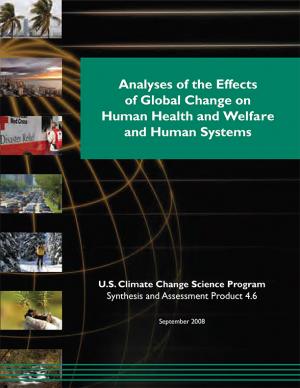Access a range of climate-related reports issued by government agencies and scientific organizations. Browse the reports listed below, or filter by scope, content, or focus in the boxes above. To expand your results, click the Clear Filters link.
This document was written for those tasked with the development, maintenance, and implementation of a state disaster recovery plan, and is intended to serve as an evaluative guidebook from which users can draw from widely accepted steps derived from planning processes and informative best practices adopted in other states. The guide can be used to assess where a state plan stacks up relative to emerging federal planning standards.
No person or place is immune from disasters or disaster-related losses. Infectious disease outbreaks, acts of terrorism, social unrest, or financial disasters in addition to natural hazards can all lead to large-scale consequences for the nation and its communities. Communities and the nation thus face difficult fiscal, social, cultural, and environmental choices about the best ways to ensure basic security and quality of life against hazards, deliberate attacks, and disasters. Beyond the unquantifiable costs of injury and loss of life from disasters, statistics for 2011 alone indicate economic damages from natural disasters in the United States exceeded $55 billion, with 14 events costing more than a billion dollars in damages each.
One way to reduce the impacts of disasters on the nation and its communities is to invest in enhancing resilience--the ability to prepare and plan for, absorb, recover from and more successfully adapt to adverse events. Disaster Resilience: A National Imperative addresses the broad issue of increasing the nation's resilience to disasters. This book defines "national resilience", describes the state of knowledge about resilience to hazards and disasters, and frames the main issues related to increasing resilience in the United States. It also provide goals, baseline conditions, or performance metrics for national resilience and outlines additional information, data, gaps, and/or obstacles that need to be addressed to increase the nation's resilience to disasters. Additionally, the book's authoring committee makes recommendations about the necessary approaches to elevate national resilience to disasters in the United States.
Enhanced resilience allows better anticipation of disasters and better planning to reduce disaster losses-rather than waiting for an event to occur and paying for it afterward. Disaster Resilience confronts the topic of how to increase the nation's resilience to disasters through a vision of the characteristics of a resilient nation in the year 2030. Increasing disaster resilience is an imperative that requires the collective will of the nation and its communities. Although disasters will continue to occur, actions that move the nation from reactive approaches to disasters to a proactive stance where communities actively engage in enhancing resilience will reduce many of the broad societal and economic burdens that disasters can cause
Adaptive management is a means of facilitating decision making and helping to resolve the uncertainties that hinder effective management. This applications guide builds on the framework of the DOI Adaptive Management Technical Guide (Williams et al. 2007), presenting case studies to show how adaptive management can be used for both management and learning. Focus is on practical applications in the areas of importance to DOI managers—climate change, water, energy, and human impacts on the landscape.
This Technical Input to the Third National Climate Assessment examines vulnerabilities of infrastructures and urban systems to extreme weather and other events associated with climate change.
A plan published by the White House Climate Change Adaptation Taskforce to help freshwater resource managers assure adequate water supplies, safeguard water quality and aquatic ecosystems, and protect human life, health, and property.
In 2008, agricultural greenhouse gas sources accounted for about six percent of total U.S. greenhouse gas emissions. This report, known as the USDA GHG Inventory, was developed to provide a comprehensive assessment of the contribution of U.S. agriculture and forestry to greenhouse gas emissions and carbon sequestration, providing an in-depth look at greenhouse gas emissions and carbon sequestration at the state and regional scales.
This report—written primarily for the EPA and other federal agencies, organizations, and researchers with interests in public health; the environment; building design, construction, and operation; and climate issues—addresses the impacts that climate change may have on the indoor environment and resulting health effects, finding that steps taken to mitigate climate change may cause or exacerbate harmful indoor environmental conditions. The report discusses the role the EPA should take in informing the public, health professionals, and those in the building industry about potential risks and what can be done to address them. The study also recommends that building codes account for climate change projections; that federal agencies join to develop or refine protocols and testing standards for evaluating emissions from materials, furnishings, and appliances used in buildings; and that building weatherization efforts include consideration of health effects.
This report, the final in a series from the National Academies, makes the case that the environmental, economic, and humanitarian risks posed by climate change indicate a pressing need for substantial action to limit the magnitude of climate change and to prepare for adapting to its impacts. The report advocates for an iterative risk management approach to climate change and using strong federal climate policies to support and enhance existing local, state, and private-sector efforts.
This guide for conservationists and resource managers aims to help practitioners understand and assess the impact of climate change on species and ecosystems, including fisheries.
A strong, credible body of scientific evidence shows that “climate change is occurring, is caused largely by human activities, and poses significant risks for a broad range of human and natural systems,” concludes this America’s Climate Choices report from the National Research Council. The report recommends that a single federal entity be given the authority and resources to coordinate a national research effort integrated across many disciplines to improve understanding and responses to climate change.
Meeting internationally discussed targets for limiting atmospheric greenhouse gas concentrations and associated increases in global average temperatures will require a major departure from business as usual in how the world uses and produces energy. This report from the America’s Climate Choices suite of studies by the National Research Council recommends that a U.S. policy goal be stated in terms of a budget for cumulative greenhouse gas emissions over the period 2012 to 2050.
This report—known as the Comprehensive Preparedness Guide (or CPG) 101—is designed to help both novice and experienced planners navigate the planning process for emergency operations. Used in its entirety, the guide provides information and instruction on the fundamentals of planning and their application. A detailed planning checklist is provided.
This publication is intended to assist public health officials, practitioners, and other stakeholders in their efforts first to understand and then to prepare for drought in their communities. It provides information about how drought affects public health, recommends steps to help mitigate the health effects of drought, identifies future needs for research and other drought-related activities, and provides a list of helpful resources and tools.
This guide was designed to help U.S. state and territorial coastal managers develop and implement adaptation plans to reduce the impacts and consequences of climate change and climate variability. It was written in response to a request from state coastal managers for guidance from NOAA on adaptation planning in the coastal zone.
Guidance for federal and state agencies and coastal planners for conducting sea level change assessments and mapping. The report is intended to provide technical guidance to agencies, practitioners, and coastal decision-makers seeking to use and/or collect geospatial data to assist with sea level change assessments and mapping products.
This report presents the common trends in how 12 local governments across the country developed and implemented stormwater policies to support green infrastructure. The local policies examined include interagency cooperation, enforcement and management issues, and integration with state and federal regulations. While a strong motivation for these policies and programs is innovation in stormwater management, many communities are moving past the era of single objective spending and investing in runoff reduction and stormwater management strategies that have multiple benefits. Green infrastructure approaches have a range of benefits for the social, environmental, and economic conditions of a community. Not only do these case studies include success stories for building a comprehensive green infrastructure program, but they also provide insight into the barriers and failures these communities experienced while trying to create a stormwater management system that includes more green infrastructure approaches.
This volume in the National Research Council's America's Climate Choices series describes and assesses different activities, products, strategies, and tools for informing decision makers about climate change, including education and communication, and information systems and services for helping them plan and execute effective, integrated responses. Information and reporting systems discussed include climate services and a greenhouse-gas accounting system.
This report, by a federal working group led by the National Institute of Environmental Health Sciences, highlights 11 key categories of diseases and other health consequences that are occurring or will occur due to climate change. The report provides a starting point for coordination of federal research to better understand climate’s impact on human health. The recommendations of the working group include research to identify who will be most vulnerable, and what efforts will be most beneficial.
This report, submitted to the U.S. Congress in April 2010, evaluates a range of strategies for reducing greenhouse gases from transportation, including introducing low-carbon fuels, increasing vehicle fuel economy, improving transportation system efficiency, aligning transportation planning and investments to achieve GHG reduction objectives, and pricing.
Agreements to limit emissions of greenhouse gases are the focus of international negotiations, and with such accords will come the need to accurately estimate these emissions, monitor their changes over time, and verify them with independent data. This report identifies strategic investments that could be made to both improve self-reporting and yield a capability to verify these estimates and reduce uncertainties about emissions to less than 10 percent.
These reports for U.S. coastal regions summarize land cover status in 2010 and land cover changes over the previous decade and a half (from 1996 to 2010). They provide an overview of key findings using reader-friendly maps and graphics. All change information was produced as part of NOAA’s Coastal Change Analysis Program (C-CAP) land cover mapping efforts. Reports available: National Overview, Great Lakes, Gulf Coast, Northeast, Southeast, and West Coast.
The workbook for practitioners uses strategic questions and activities to assess resilience in social-ecological systems. The approach involves constructing a conceptual model of a system that includes resources, stakeholders, and institutions, and identifies potential thresholds between alternative systems states in order to provide insight into factors that build or erode a system's resilience. A resilience assessment can help with developing strategies for coping with uncertainty and change.
The sixth edition of a report card to the American public on the biological health of U.S. living marine resources. The report includes updates on major fisheries and marine resources, as well as feature articles on fisheries science, coral, and cooperative and proactive approaches to the Endangered Species Act.
This report is the Second National Climate Assessment, summarizing the science and impacts of climate change on the United States. The report discusses climate-related impacts for various societal and environmental sectors and regions across the nation. It is an authoritative scientific report written in plain language, with the goal of better informing public and private decision making at all levels.
This report provides a detailed treatment of climate concerns in coastal areas, and proposes an approach for assessing vulnerability to climate change and climate variability, developing and implementing adaptation options, and integrating options into programs, development plans, and projects at the national and local levels. This is known as a vulnerability and adaptation, or V&A, approach.
A collection of case studies and information about how coastal communities can plan for and adapt to climate change. These resources represent a national guide for how coastal communities can plan and adapt. Case study issues range from coastal managers addressing sea level rise in Rhode Island to coral bleaching caused by rising sea temperatures in Florida.
This Synthesis and Assessment Product (SAP), developed as part of the U.S. Climate Change Science Program, examines potential effects of sea level rise from climate change during the twenty-first century, with a focus on the mid-Atlantic coast of the United States. Using scientific literature and policy-related documents, the SAP describes the physical environments; potential changes to coastal environments, wetlands, and vulnerable species; societal impacts and implications of sea level rise; decisions that may be sensitive to sea level rise; opportunities for adaptation; and institutional barriers to adaptation. This SAP discusses ways natural and social science research can improve understanding and prediction of potential impacts to aid planning and decision making.
An assessment of the potential for abrupt state changes or regime shifts in ecosystems in response to climate change. Better understanding of sudden changes to ecosystems, and the goods and services they provide, is extremely important if natural resource managers are to succeed in developing adaptation strategies.
This Synthesis and Assessment Product (SAP), developed as part of the U.S. Climate Change Science Program, offers a detailed look at global distributions and properties of airborne particles known as "aerosols." The report examines the various ways in which aerosols influence climate, and the uncertainties in our ability to observe and measure these particles' impact on the climate system.
This report systematically examines the market readiness of key technologies important to meeting climate change mitigation goals and assesses the barriers and business risks impeding their progress and greater market application. The report was sponsored by the U.S. Climate Change Technology Program, a multi-agency group led by the U.S. Department of Energy.
Average temperatures in the Arctic have increased at almost twice the rate of the planet as a whole. Such temperature changes have been accompanied by shrinking sea ice, melting ice and permafrost on land, and widespread impacts to land and ocean ecosystems. This Synthesis and Assessment Product, developed as part of the U.S. Climate Change Science Program, offers recommendations for future research in this area.
This reanalysis combines a diverse array of past observations together within a model to derive a best estimate of how the climate system has evolved over time. The goal is to provide consistent and reliable long-term datasets of temperatures, precipitation, winds, and many other climate variables. The report is a Synthesis and Assessment Product developed as part of the U.S. Climate Change Science Program.
Earth's climate varies naturally, and also changes in response to human activity. Our ability to adapt and respond to climate depends on our understanding of the system and how to incorporate this understanding into resource management decisions. This Synthesis and Assessment Product, developed as part of the U.S. Climate Change Science Program, offers an evaluation of decision support experiments that have used seasonal-to-interannual climate forecasts and observational data in the context of water resource management.
This Synthesis and Assessment Product, developed as part of the U.S. Climate Change Science Program, integrates knowledge of the stratospheric ozone layer, human-emitted ozone-depleting substances, and the amount of harmful ultraviolet radiation reaching Earth's surface.
This Synthesis and Assessment Product, developed as part of the U.S. Climate Change Science Program, is an assessment of the effects of short-lived gases and particles in the atmosphere, which can significantly change regional surface temperatures. By the year 2100, short-lived gases and particles may account for as much as 40 percent of the warming over the continental U.S. in summertime.
This Synthesis and Assessment Product from the U.S. Climate Change Science Program reviews impacts of global climate change on three broad dimensions of the human condition: human health, human settlements, and human welfare. This report examines opportunities for adaptation and associated recommendations for addressing data gaps and near- and long-term research goals.

